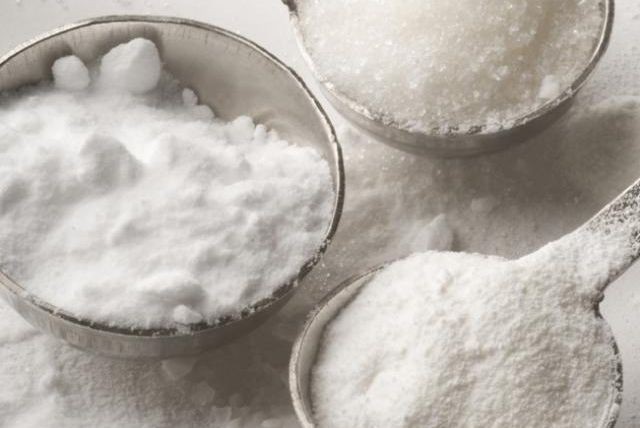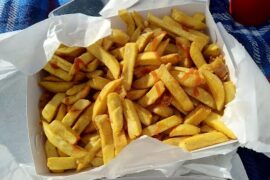Discover the Difference: Bicarb Soda vs. Baking Powder
Hello, baking enthusiasts and curious parents! If you’ve ever found yourself in a tizzy, quite literally sifting through your pantry searching for that one elusive ingredient that will make or break your culinary creation, you’re not alone. Today, we’re going to clear the air about an all-too-common kitchen conundrum: Is bicarb soda the same as baking powder? I can already see those eyebrows lowering, as we embark on this journey to unveil the well-risen secrets of the baking world!
First off, let’s set the scene: It’s a sunny Sunday afternoon, and you’ve decided to don your apron and bake some fluffy muffins for the family. The recipe calls for a teaspoon of baking powder, but all you have is a container labeled bicarb soda. Now what? Before you dash to your nearest store or ditch the baking altogether, let’s iron out the crinkles in this common kitchen question.
Bicarb soda, known as baking soda in many parts of the world, and baking powder are both leavening agents, which means they help baked goods to rise. However, they’re not exactly interchangeable, and their differences have a lot to do with chemistry. Truth be told, knowing when and how to use them can be the difference between a dessert that dazzles and one that falls flat—quite literally!
The Basic Chemistry Behind Bicarb Soda and Baking Powder
Let’s get down to the nitty-gritty chemistry of it all. Bicarb soda, or sodium bicarbonate, is a base. When mixed with an acid and a liquid, it undergoes a chemical reaction that produces carbon dioxide bubbles. These bubbles expand when heated, lifting your batter or dough and creating that sought-after spongey or crumbly texture.
Here’s where it gets interesting: Baking powder is actually a combination of bicarb soda and a dry acid, such as cream of tartar. It’s like a ready-mixed, all-in-one leavening team. Some baking powders also include a starch, such as cornstarch, to prevent the ingredients from activating during storage. Unlike bicarb soda, which requires an additional acidic ingredient to work its magic, baking powder just needs moisture and heat. Cue the “oohs” and “aahs”!
Decoding the Kitchen Staples: When to Use Bicarb Soda vs. Baking Powder
Now that we’ve got a handle on the science side of things, how about we look at their practical applications? When you reach for your trusty bicarb soda, keep in mind that you’ll need an acidic ingredient to activate it. Consider recipes with yogurt, lemon juice, brown sugar, or buttermilk—these will get along with bicarb soda like peas and carrots!
If your recipe doesn’t include an acidic ingredient or specifies baking powder, it’s best to stick with that. Baking powder is more forgiving and ensures a consistent rise without the need for additional acids in the mix. This makes it a go-to option for recipes like vanilla cakes or cookies, where there aren’t any inherent acidic elements.
Rules of Thumb for Substitution
Is there still a pinch of room in your recipe for improvisation? Certainly! Although not identical, bicarb soda and baking powder can sometimes substitute for one another if you know the rules. Remember, due to the presence of an acid in baking powder, you will need more of it to replace bicarb soda. The typical conversion is about 2-3 times more baking powder than bicarb soda. Conversely, if you’re replacing baking powder with bicarb soda, you’d not only use less but also find that acidic counterpart to invite to the baking party.
Through this engaging exploration of the bakery basics, we aim to ensure that your next baking adventure not only ends with a scrumptious result but also provides you with the confidence to understand the ingredients within your reach. After all, with a sprinkle of knowledge and a cup of curiosity, there’s no limit to the joy and satisfaction you can whip up in the kitchen!
So, are you ready to delve deeper and become the whisk-taker of your household? Stay tuned as we continue to mix in more insights, sift through further applications, and ensure you’ll never confuse bicarb soda for baking powder again. Spoiler alert, there’s more delectable guidance on the horizon, and your journey through the realm of baking mastery is just beginning!
With a little bit of scientific know-how and a lot of heart, you can conquer any recipe that comes your way. Stay with us as we whip up even more tips that will have you sprinkling and stirring like a pro in no time!

Five Must-Know Tips for Parents: Bicarb Soda and Baking Powder
Embarking on your baking journey means understanding the essence of your ingredients. Here are five essential pointers every parent should know when preparing to use bicarb soda or baking powder:
-
Understanding Activation
Bicarb soda requires an acidic component to activate. Make sure your recipe includes ingredients like lemon juice, yogurt, or vinegar. If there’s no natural acid in the mix, your bicarb soda won’t have the ‘oomph’ to make your baked goods rise.
-
Timing Matters
Once bicarb soda or baking powder is activated by moisture, the clock starts ticking! Get your batter into the oven promptly to capture all that leavening power. Delaying can result in less lift, and we certainly don’t want any baking disappointments.
-
Proportions are Key
Using too much bicarb soda can cause a soapy taste and yellow coloring, while an excess of baking powder may leave a bitter aftertaste. Measure carefully to keep the flavors of your baked masterpiece spot on.
-
Storage Smarts
Both bicarb soda and baking powder have a shelf life. A simple way to check for potency is to drop a little into some hot water. If it bubbles vigorously, you’re good to go. If it’s a lackluster performance, it’s time for a fresh supply.
-
The Multipurpose Magic of Bicarb Soda
Bicarb soda isn’t just for baking. It’s a cleaning powerhouse, a deodorizer, and can even be used in fun science experiments with the kids! Explore its versatility for a multifaceted kitchen companion.
Transform Your Baking With Proper Ingredient Know-How
The distinctions between bicarb soda and baking powder extend beyond the scope of simple kitchen chemistry. They are like notes in an intricate melody, each bringing its unique tone to the symphony of flavors in your baked goods. Drawing on these five key insights ensures that your family’s next bite into a homemade treat is nothing short of perfection.
In this realm where flour swirls like snowflakes and whisks wave like conductor’s batons, even a sprinkle of knowledge can lead to a standing ovation from your toughest critics—the kiddos. And let’s face it, watching their faces light up with joy at the sight of a perfectly risen batch of goodies? That’s a parent’s true reward.
Are you equipped to handle whatever recipe may come your way, brandishing your spatula with the confidence of a seasoned baker? You betcha! Embrace the adventure that awaits in the kitchen, for now you are armed with the knowledge to turn those ingredients into a delectable masterpiece.
Wishing you fluffy pancakes, sky-high cakes, and cookies that crumble just right. Let the sweet scent of success waft through your home as your oven converts those humble ingredients into culinary magic. Never underestimate the power of a proper leavening agent—happy baking, friends!
For more great articles please see here. For more information see here
Disclaimer
The articles available via our website provide general information only and we strongly urge readers to exercise caution and conduct their own thorough research and fact-checking. The information presented should not be taken as absolute truth, and, to the maximum extent permitted by law, we will not be held liable for any inaccuracies or errors in the content. It is essential for individuals to independently verify and validate the information before making any decisions or taking any actions based on the articles.




